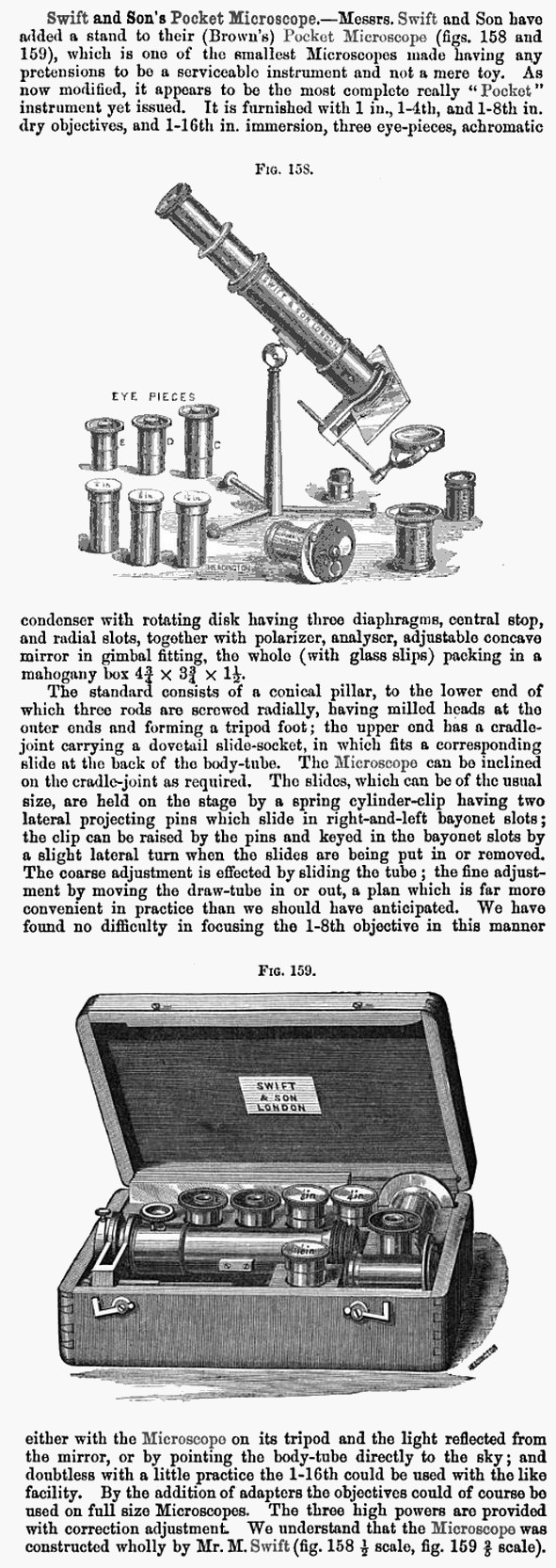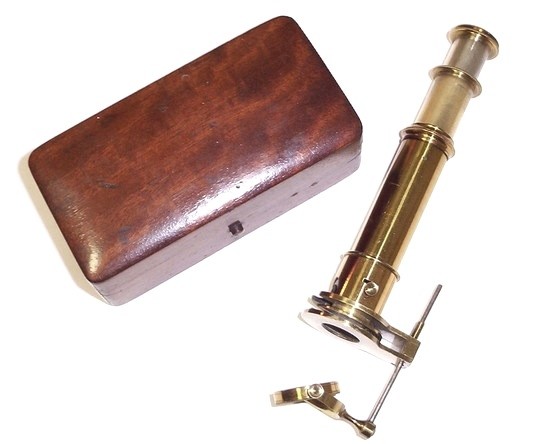
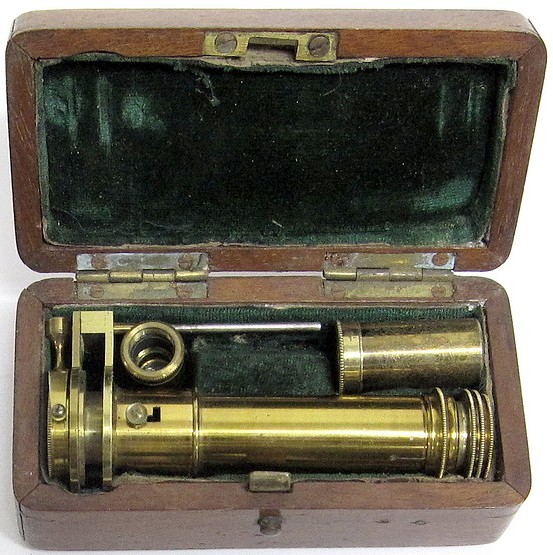
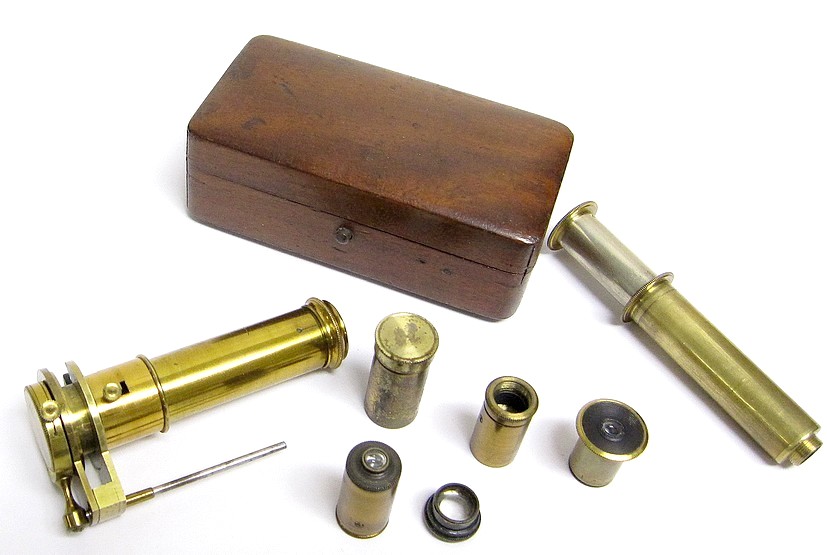
This is an example of the Swift-Brown pocket microscope from around 1880. It was sold with and without a stand and with varying accessories. The example shown here is without the stand.
The following description and illustration of the microscope without the stand is extracted from The Microscope by Henri Van Heurck, 1893
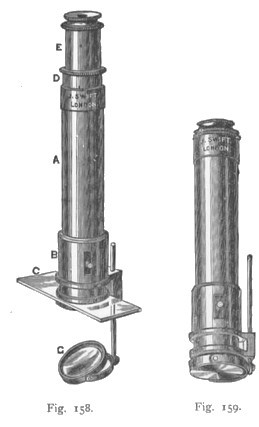
The small pocket microscope, represented in figures 158 and 159, should also be mentioned. It can be conveniently carried in the breast pocket, for when the apparatus is closed it is only 7 centimetres (3 inch) in length and 2 centimetres (3/4 inch) in diameter. One of these figures represents the microscope closed, and the other the instrument ready for use. The preparation C is held firm by a small tube B, containing a spiral spring. The rapid movement is made with the tube D, and the slow movement by the tube E, which contains the ocular. The microscope furnished with an ocular and objectives of 1 inch and 1/5th inch, costs 5 pounds. Not having seen any recent objectives of this maker, we cannot give an estimate of their value. Those which we examined in 1878 were good (see Third Edition, p. 172).
This description is from the 1892 Swift catalog:
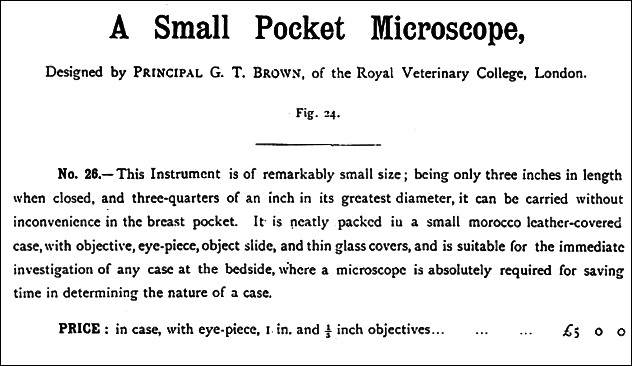
The following was taken from How to Work With The Microscope by L. S. Beale, 1879.
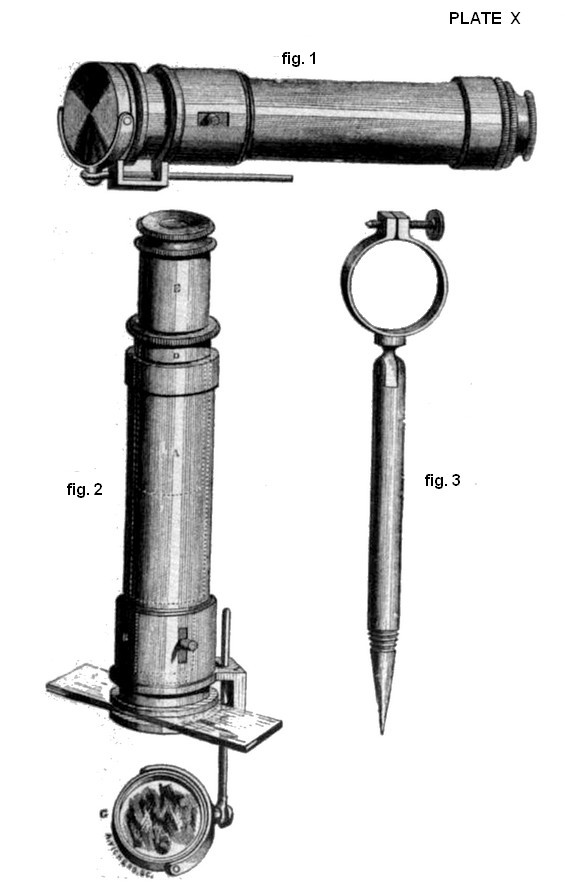
Professor Brown, of the Veterinary Department of the Privy Council, has lately introduced a very valuable modification of the clinical pocket microscope which occupies far less space than the one above described. This beautiful little instrument can be used for examining objects under the highest powers, and can be carried in the waistcoat-pocket. It is figured in PLATE X, figs. I, 2, 3, of the actual size. It is four inches long by one inch in diameter in its widest part The general arrangement of the instrument will be understood by the figures, but it has been fully described by Professor Brown in the “Veterinarian” for November, 1870, and it is made by Mr. Swift, University Street, Tottenham Court Road. The instrument, with a quarter, costs about three guineas. I believe this microscope will be of great use to naturalists, to members of the medical profession, and to all who desire to have a very portable microscope, adapted for examining objects with high powers. A very little practice will enable any one to use it without difficulty. Professor Brown employs it in veterinary work. He can use it in the open air, and can examine secretions of the blood of animals in the sheds in which they stand, and under powers magnifying one thousand diameters.
The eye-pieces and objectives of this instrument have their aberrations accurately corrected to the short length of the body. PLATE X, fig. 2, represents the instrument when in use. The slide is held in its position by a spring box, marked B, and can be freely moved about when under examination. The coarse adjustment is obtained by sliding the tube l in its fitting, to which the object-glass is attached; the fine adjustment is effected by moving the tube E, which enables the object to be accurately focussed with the greatest ease.
Eye-pieces of different power, condensers, polarising apparatus, and other appliances can be added to the instrument without difficulty, if required. The glass slides, thin glass covers, pipettes, needles, etc., can be packed in the same little case with the microscope. The instrument Mr. Swift made for me is packed, with its stand, in a small strong box, which measures in inches 3 3/4 x 1 3/4 x 1 1/2, and is provided with an inch, a quarter, and a one-sixteenth of an inch objective, with slides and thin glass.
This microscope was also made with an attached stand and could be supplied with additional accessories. The following was extracted from the Journal of the Royal Microscopical Society, 1883
